Choosing the Right Wing Foils for Every Kiteboarder
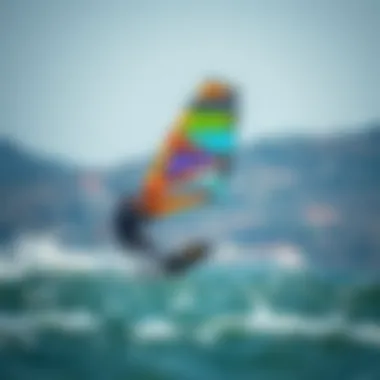
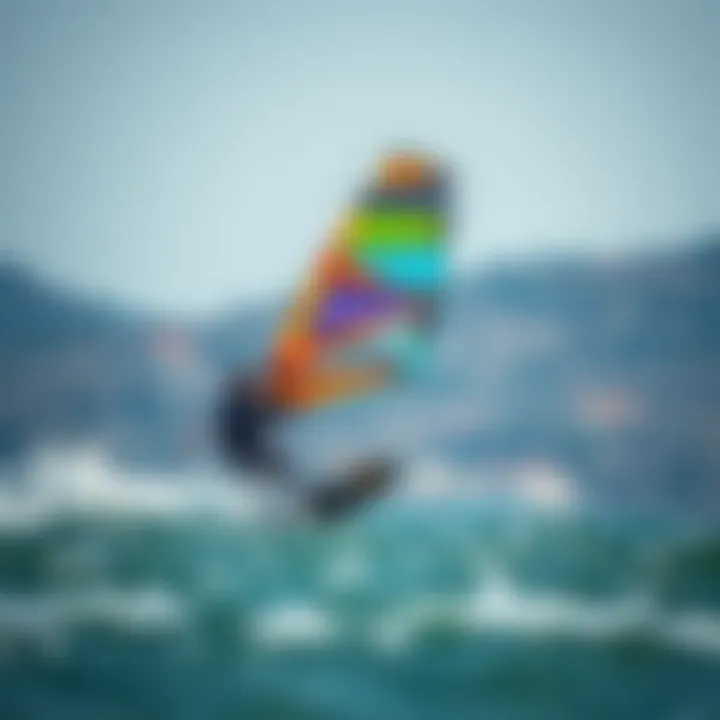
Intro
Wing foiling has erupted onto the scene, captivating outdoor enthusiasts and athletes alike. This sport merges aspects of kiteboarding and windsurfing into a fascinating ride that gives the sensation of floating above water while harnessing the wind's power. As more people gravitate towards wing foiling, it's crucial to grasp what pairs work best regarding skill level, style, and unique riding conditions.
While it’s tempting to dive straight into the thrill of the sport, some knowledge concerning gear, techniques, and market options can significantly enhance one's experience. This guide delves into the essential factors when choosing a wing foil, covering material selection, sizing, and brand reputation. In addition, we will explore some of the current popular models in the market and offer a comparative analysis of their features, creating a roadmap to aid both novice and seasoned riders in their selection process.
Whether you’re an eager beginner or an experienced pro, understanding your equipment choices can potentiate an exhilarating and safe ride. As we navigate through these aspects, you’ll find valuable insights that encourage you to embrace the adventure helming a wing foil brings.
Understanding Wing Foiling
Wing foiling has emerged as an exhilarating niche within the water sports landscape. It's more than just a trendy outdoor activity; it represents a harmonious balance between wind, water, and human ingenuity. For enthusiasts wanting to delve deeper into this sport, grasping the fundamentals of wing foiling is crucial. Understanding its premises not only enhances one’s riding experience but also allows for more informed decision-making when selecting the right gear, honing skills, and picking optimal locations.
Definition and Basics
Wing foiling is best described simply as riding a board that is elevated above the water's surface using a hydrofoil, while being propelled by an inflatable wing. In contrast to traditional windsurfing, where sails are affixed to boards, wing foiling provides a unique freedom; riders can manipulate the wing independently, allowing for dynamic maneuvers.
At the heart of wing foiling is the hydrofoil, a submerged wing that lifts the board out of the water at speed, creating a sensation of flying above the surface. This lift reduces drag, offering a smoother ride, especially in choppy waters. Moreover, the simplicity of set-up means that enthusiasts can hit the water quicker than more complex wind-driven sports.
The key components include the wing itself, which comes in various sizes and shapes designed to suit different wind conditions and skill levels, and the board, which can vary in size depending on the rider’s weight and experience.
Evolution of Wing Foiling
The evolution of wing foiling has taken place rapidly over the past few years. Initially, the concept of using wings for propulsion emerged in stand-up paddleboarding applications, but it didn't take long for riders to recognize potential for a new water sport. As designers began refining their ideas, the first iterations of inflatable wings appeared on the market.
From rudimentary shapes and sizes, advances in design led to wings made from lightweight materials that ensure durability without compromising performance. Brands have continually pushed the envelope, experimenting with different aspect ratios, shapes, and construction methods for foils and wings. One significant milestone in this journey was the introduction of foldable wings, making transport and storage even easier for riders.
The sport has matured, attracting a broad range of enthusiasts—from novices looking for an exciting way to experience the water to seasoned veterans searching for something fresh. This evolution is evident not only in the gear itself but in the expanding community of wing foilers, sharing tips and techniques through forums, social media platforms like reddit.com, and instructional videos.
The collective experience of users online plays a pivotal role in pushing the sport forward. Feedback loops from communities continually inform manufacturers about what works, what doesn’t, and what can be improved. It’s a vibrant, dynamic space reflecting the passion of those who live and breathe wing foiling.
"As long as there’s wind and water, the possibilities for wing foiling are endless. Every day out on the water can be different.”
In summary, understanding the definition and evolution of wing foiling is essential for avid riders. Knowledge about this sport's origins and mechanics lays the groundwork for informed choices as you explore the vast world of wing foiling.
Importance of Choosing the Right Wing Foil
When it comes to conquering the waves with a wing foil, choosing the right gear is not merely an option—it’s a necessity. The right wing foil can significantly affect your performance, enjoyment, and safety out on the water. With a head spinning variety of choices available, understanding the importance of this decision will keep you gliding smoothly, rather than crashing headlong into the learning curve.
The wing foil you select impacts various aspects of your ride; from the ease of control to the responsiveness in different conditions. Every kiteboarder, beginner or expert, should start with a foil that matches their skill set and environment. Misjudgments here can lead to frustrating experiences or even mishaps. Let's delve into the specific elements that underline how crucial this choice is.
Performance Considerations
Performance while wing foiling is dictated by several interrelated elements, including the wing foil's shape, size, and material.
- Shape and Design: The outline and aspect ratio can make a world of difference. A higher aspect ratio, for instance, typically offers better speed but can be harder to maneuver.
- Material Composition: Stronger materials like carbon fiber provide durability and lower weight, while heavier materials like aluminum may not perform as energetically. This trade-off must resonate with your personal riding style and preferences.
- Size Matters: Larger wings generally offer more lift, making them suitable for lighter winds and beginners. On the flip side, they can be cumbersome for experienced riders who desire high-speed precision.
Understanding these intricacies means elevating the quality of your rides. Choosing poorly can be akin to picking the wrong tool for a job—you’ll struggle, and your results will be far from what you envisioned.
Safety and Control
Safety, in the realm of wing foiling, cannot be stressed enough. A mismatched or inferior wing foil can seriously compromise your control, and inadvertently lead to accidents.
- Control Factors: If a wing foil is too large or heavy for your skill level, it could lead to oversteering or even wipeouts. Proper sizing gives you the steering finesse required for smooth adjustment and maneuvering on waves.
- Stability in Varied Conditions: Your selected wing foil should cater to the wind and water types you often encounter. For example, choppy or gusty winds necessitate a foil that offers stability. Otherwise, you may find yourself at the mercy of unpredictable waves.
- Learning Curve: Particularly for those just starting, having the right foil can ease the learning curve. An experienced rider knows how to navigate rough waters better than a newbie, but this is entirely contingent on having the proper equipment.
Certainly, understanding the interplay between safety, performance, and control gives you a richer appreciation for the world of wing foiling. In the long run, investing the time to select the right wing foil sets the stage for a rewarding experience, where you can truly savor every moment on the water.
“The right gear not only enhances performance but also ensures safety.”
By recognizing the significance of each component in your wing foil, you can make decisions that not only elevate your skill but also enrich your overall experience. Take the time to choose wisely—your future self will thank you for it.
Key Features to Look for in Wing Foils
When it comes to wing foiling, one size definitely does not fit all. The importance of understanding key features in wing foils cannot be overstated, as these elements directly influence both performance and safety on the water. Each rider has their own unique style and preferences, making it crucial to dive into the specifics that can make or break your experience. Let’s explore the critical aspects you need to consider when selecting the right wing foil for your adventures.
Material Composition
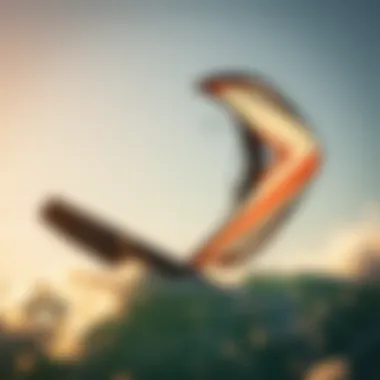
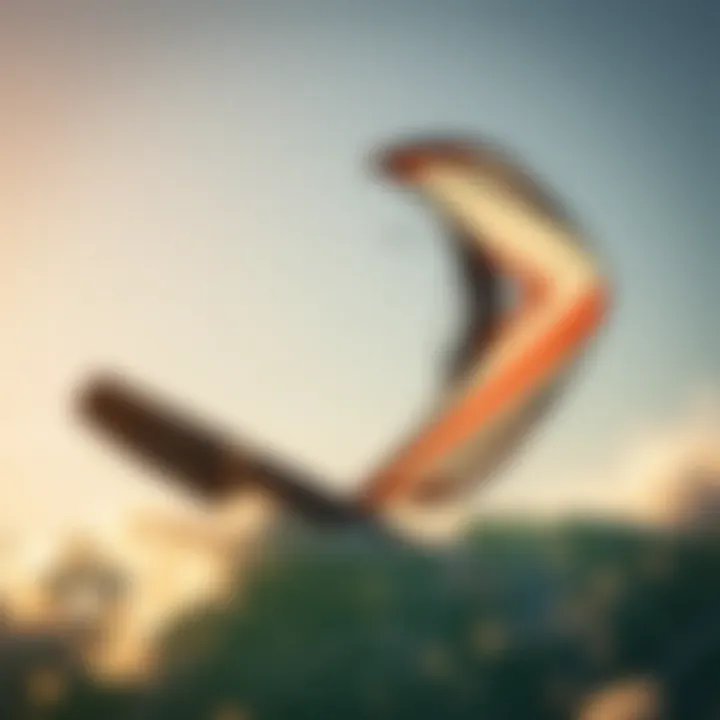
Durability
The durability of a wing foil is an essential factor, especially when you're pushing the limits or tackling challenging environments. A durable wing foil can stand up to the test of rough waters and the wear and tear of regular use. Generally, materials like high-quality nylon or reinforced polyester are known for their resilience. These materials ensure that your gear can withstand bumps and scrapes without falling apart at the seams. Durability also means less frequent replacements and less money spent in the long run. However, keep in mind that while a more durable foil tends to cost a tad more, the investment pays off when you’re out on the water without worry.
Weight
When discussing weight, it’s all about the balance between maneuverability and stability. A lighter wing foil often translates to easier handling and improved speed, which can directly elevate your performance, especially in gusty conditions. Foils that utilize advanced materials like carbon fiber are incredibly lightweight yet strong, making them a popular choice amongst experienced riders. Yet, lighter doesn’t always mean better for every rider. Some plush riders might prefer the sturdiness that comes with heavier models, finding them more stable on water. Therefore, consider your own riding style when weighing this factor.
Flexibility
Flexibility in wing foils boils down to how the wing bends and reacts under various conditions. A flexible wing enhances lift while offering a smoother ride through choppy waters. It can also improve your ability to turn sharp without losing speed or stability. That said, too much flexibility can result in a loss of control, particularly for those who tend to push their limits. The key characteristic here is finding a foil that strikes the right balance for your skill level and conditions. This can be a matter of personal preference, but understanding this aspect can greatly enhance your wing foiling experience.
Wing Size and Shape
Choosing the right size and shape of your wing foil is pivotal. Each feature influences lift, drag, and overall performance on the water. Knowing what to look for can make or break your riding style.
Surface Area
Surface area determines how much lift your wing generates. A larger surface area is beneficial for beginners or those riding in lighter winds, as it can help you get off the water quicker. However, larger wings might also mean more drag, making them feel bulkier and harder to maneuver. Conversely, a smaller wing offers quicker response and agility but requires more skill to handle effectively. It’s essential to match the surface area with your skill level and the conditions you expect to encounter.
Wing Span
The wing span directly impacts how easily you can glide through the water. A longer wing span can help improve lift and glide, making it great for flat water conditions or longer rides. However, this can also make control a bit trickier, especially in turbulent winds. Riders must consider their comfort level with maneuvering a larger wing; what may be a benefit for one rider could be a drawback for another.
Aspect Ratio
Aspect ratio plays a critical role in determining the efficiency of your wing foil. A higher aspect ratio means a longer, thinner wing that can slice through the air and water more efficiently, providing reduced drag and improved performance in strong winds. However, these wings can be harder to control, especially for those new to the sport. In contrast, a lower aspect ratio offers improved stability but comes with more drag, which could dampen speed. Knowing which aspect ratio pairs well with your riding style and local conditions can greatly influence your enjoyment and success.
Inflation System
A reliable inflation system is crucial for those who prioritize ease and performance. Most modern wing foils come equipped with valves that make inflating and deflating easy, allowing you to set up quicker and spend more time on the water. Moreover, efficient inflation systems minimize the chances of air leakage, which can lead to disastrous results out on the waves. A good inflation system should not only be user-friendly but also robust enough to endure repeated use. Choosing a wing foil with a top-notch inflation system can save headaches and ensure your focus remains on enjoying your ride.
Key Takeaway: Choosing the right features in wing foils is not just about preferences but involves a keen understanding of how each aspect can affect your performance, safety, and enjoyment on the water.
Popular Brands in the Wing Foil Market
In the vast world of wing foiling, the choice of brand can make or break your experience on the water. Popular brands are crucial for several reasons: they often embody the latest technology, ensure a certain level of quality, and offer a range of products that cater to different skill levels and preferences. Choosing a renowned brand can provide reassurance that you’re investing in a well-researched product, potentially saving you from future headaches.
Brand Overview
When diving into the realm of wing foils, it's easy to feel overwhelmed by the number of options available. However, familiarizing yourself with leading brands can provide clarity. Brands like Duotone, Naish, and Slingshot are not just names; they represent a commitment to innovation and performance in the wing foiling community.
Duotone, for example, is known for its attention to detail and cutting-edge designs, while Naish has a legacy in watersports that speaks volumes about reliability and performance. Slingshot often focuses on versatility, creating products suitable for a variety of skill levels. Familiarity with these brands can ultimately guide your selection process, helping you find gear that aligns with your riding style and aspirations.
Comparison of Brand Offerings
Price Range
Price range is one aspect that cannot be overlooked when considering wing foils. It serves as an initial gatekeeper for many riders. Brands offer a spectrum of prices, from budget-friendly options from companies like iRocker to high-end models from brands like Naish. A lower price point often appeals to newcomers not ready to make a substantial investment but wanting to get a taste of wing foiling.
Conversely, premium models usually incorporate the latest advancements in technology, such as lightweight materials and superior wing designs, which can enhance performance significantly. These choices affect your overall experience; opting for an affordable option might allow you to enter the sport without breaking the bank, but it might not perform at the levels of more expensive alternatives, particularly as you progress in skill.
Warranty and Support
Warranty and support are pivotal in the world of wing foiling. Many established brands like Fanatic and F-One offer extensive warranty periods, demonstrating their commitment to customer satisfaction and product durability. A robust warranty can ease the mind of a buyer, knowing that in the event of a defect or mishap, assistance is available.
Additionally, reliable customer support is equally important. Trusted brands usually provide contact options for customers facing issues, whether through online chats, phone numbers, or community forums. Good support not only addresses immediate concerns but also fosters a community among riders, encouraging shared experiences and setups. This connection can enrich the entire wing foiling experience.
User Reviews
User reviews represent the voice of the community and are invaluable when diving into which wing foil might be right for you. Rather than simply relying on marketing jargon from companies, hearing from fellow riders can provide practical insights. Platforms such as Reddit and various kiteboarding forums serve as treasure troves of user experiences.
Brands with a solid reputation often feature glowing reviews highlighting their performance either in calm conditions or heavy winds. These testimonials lead to more informed decision-making. However, it’s essential to understand not every review is created equal. Some might reflect individual preferences or conditions differing vastly from your own. Sifting through multiple reviews gives you a broader understanding and helps you to honestly assess what works best for your own riding style and conditions.
"Choosing a brand is just as important as picking the right model. It’s not just about the name but what it represents in terms of quality and community."
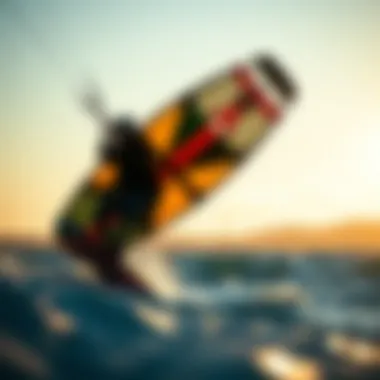
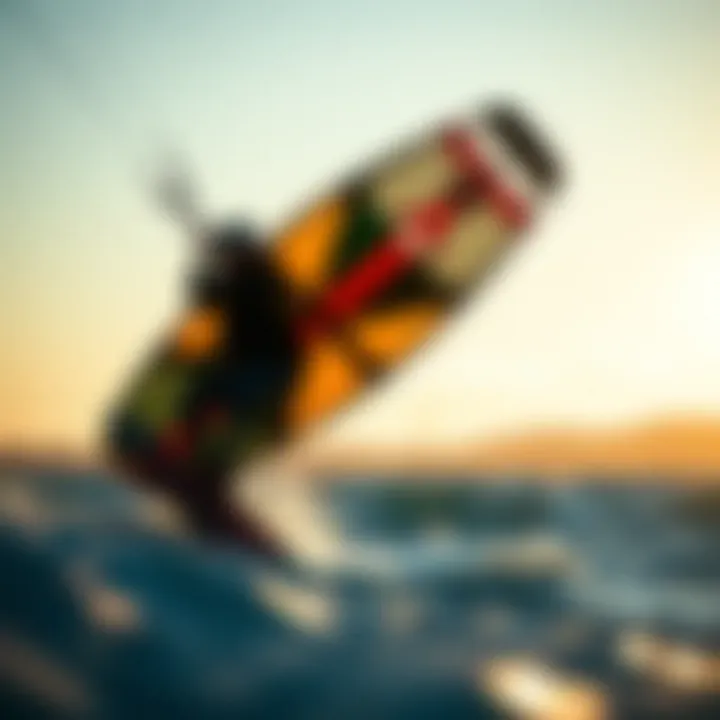
Thus, engaging with the landscape of brands can lead to a fulfilling wing foiling journey. It can help you avoid pitfalls and ensure that you are well-equipped to face the waters with confidence.
Top Wing Foils of the Year
Choosing the right wing foil can significantly enhance your experience on the water. Whether you are seeking that adrenaline rush with high-performance models or a more relaxed pace with beginner-friendly options, understanding the top wing foils of the year is essential for any enthusiast. These foils are often coveted for their superior design, materials, and capabilities, making them must-haves for anyone serious about wing foiling.
High-Performance Models
High-performance models are designed for experienced riders who demand precision and speed. These foils offer advancements in technology, making them efficient in various conditions.
Technical Specifications
The technical specifications of a high-performance wing foil are critical. Key characteristics include wing shape, material composition, and aspect ratio, all of which contribute to the overall performance. For instance, a higher aspect ratio allows for greater lift and speed, making it a favorite among competitive riders.
Additionally, many high-performance foils incorporate materials like carbon fiber, which significantly enhances durability while keeping the weight low. This is a beneficial choice, as lighter foils often translate into quicker response times on the water.
A unique feature to consider is the stiffness of the foil's structure, which can affect overall control. While a stiffer foil may offer enhanced performance, it might also require a higher skill level to harness properly. Hence, selecting the right technical specifications is vital for maximizing your experience.
Best Use Cases
When it comes to best use cases, these high-performance wing foils excel in a variety of conditions, particularly in challenging wind scenarios. They are ideal for experienced riders looking to perform tricks or race against others. The key characteristic here is versatility; good high-performance models can handle various styles of riding, from downwinders to freestyle.
It's also about how you want to experience the water. These foils can deliver rapid acceleration and smooth gliding, making them perfect during strong winds. However, if you're a beginner, diving into high-performance models right off the bat could be daunting, as they require precise handling and experience.
Beginner-Friendly Options
For those just starting with wing foiling, beginner-friendly options provide a perfect avenue for learning without overwhelming the rider. These models are specifically designed for ease of use, making the sport accessible to a broader audience.
Ease of Control
Ease of control is what truly sets beginner-friendly wing foils apart. These foils are designed with more stability and forgiving characteristics, enabling newcomers to learn the ropes without feeling intimidated. Typically, they come with a lower aspect ratio, which makes them more stable at slower speeds.
The key characteristic of these beginner-friendly options lies in their user-friendly inflation systems and construction. Such features decrease the likelihood of crashes, which is common when you're still figuring out your balance and steering. A notable advantage here is that riders build confidence swiftly, allowing them to transition more quickly into intermediate skills.
Price Point
The price point of beginner-friendly wing foils is another significant consideration. These models are often more accessible financially, easing the entry barrier for newcomers to the sport. The costs can vary widely, but investing in a more economical model makes sense for those still testing the waters, so to speak.
The unique features often include simplified designs and durable materials that still offer decent performance without the hefty price tag seen in high-end models. However, one should keep in mind that while cheaper options can be tempting, overlooking quality could lead to dissatisfaction and a steeper learning curve.
Remember, your first wing foil doesn't have to be perfect. It's more about finding something that feels comfortable and builds your confidence on the water.
Overall, the Top Wing Foils of the Year encompasses a diverse range of options tailored to varying skill levels and preferences, ensuring all enthusiasts can find a suitable foil that enhances their experience in wing foiling.
Tailoring Your Wing Foil Selection
Choosing the right wing foil in today's market can feel like searching for a needle in a haystack. With so many options and variations, it's easy to become overwhelmed. Tailoring your selection not only enhances your performance but also ensures you make the most out of your time on the water. Understanding your own needs is crucial. Every kiteboarder has different preferences based on experience, riding style, and even geographical conditions. By carefully considering the factors of skill level and environmental elements, you can find a foil that complements your strengths while enabling you to grow as a rider.
Assessing Skill Level
Your skill level is essentially the foundation for wing foil selection. Beginning riders might prioritize stability over agility, often leaning towards wider, larger wings that can catch wind with ease. As one grows in confidence, smaller and more maneuverable wings come into play. Experienced riders, on the other hand, focus on precision and performance, investing in foils designed for speed and advanced aerodynamics.
Imagine you’re out there, wind in your hair, balancing just right. For beginners, a stable foil provides reassurance, allowing you to focus on the joy of riding rather than worry about maintaining balance. In contrast, seasoned riders thrive on challenge; they seek foils that push limits and deliver thrilling adrenaline-pumping rides. Knowing your current ability and your goals will steer you right towards the perfect wing foil for your journey.
Environmental Considerations
Environmental factors can sometimes make or break your experience. Two main aspects must be addressed: Wind Conditions and Water Type.
Wind Conditions
Wind is the lifeblood of wing foiling. It dictates your performance and enjoyment on the water. Light winds often call for larger wings, as they provide the necessary lift to get you moving. Riders will find it beneficial to understand local wind patterns; for instance, some areas experience consistent onshore winds, while others may have unpredictable gusts.
Key characteristics of wind conditions include:
- Consistency: Regular winds help build skill and confidence.
- Gustiness: Can be challenging; a larger wing helps mitigate this.
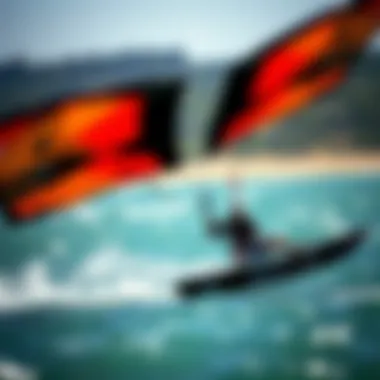
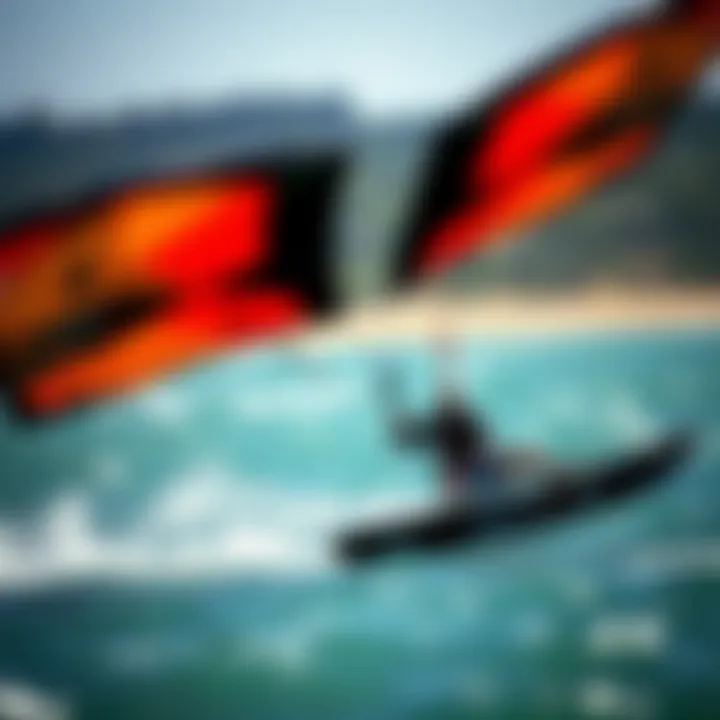
However, there’s a downside—it can restrict performance for advanced riders who prefer faster speeds. Each rider must evaluate the preferred wind conditions in their locale and align their foil choices accordingly.
Water Type
The type of water you’ll be riding on—be it flat, choppy, or wave-heavy—also plays a role in your wing foil selection. Flat water is forgiving and allows for bigger wings, making it easy to balance while practicing skills. In contrast, choppy conditions will benefit from a foil that offers better control and responsiveness.
Consider these characteristics of water type:
- Flat Water: For those starting out, conditions here allow wings designed for stability and ease of lift.
- Choppy Water: Requires a more agile foil to handle turbulence and maintain control.
"Knowing your environment and your skills is half the battle in wing foiling; find the right foil to meet both, and you're set to conquer the water."
There’s no one-size-fits-all approach in wing foiling; these elements must mesh seamlessly for the ultimate ride. With thoughtful consideration, you'll not only enjoy each session but elevate your skills in the long run.
Care and Maintenance of Wing Foils
Proper care and maintenance of wing foils is crucial for enthusiasts who wish to prolong the life of their gear and maximize performance on the water. Just like any other outdoor equipment, wing foils undergo wear and tear due to exposure to various elements. If not managed properly, this can lead to diminished performance, potential safety hazards, and the need for costly repairs or replacements.
Keeping your wing foil in prime condition helps ensure a safe and enjoyable experience. With that in mind, here are some indispensable practices to consider.
Storage Recommendations
When it comes to storing your wing foil, convenience should not compromise care. A few thoughtful practices can extend the lifespan of your foil:
- Avoid direct sunlight: Excessive exposure to the sun can degrade materials. It’s best to store your foil in a cool, shaded place.
- Use a protective bag: Invest in a quality storage bag designed for foil equipment. This will protect it from scratches and accidental damage during transport.
- Deflate it properly: If your foil is inflatable, remember to deflate it fully state before packing it away. This reduces the chance of creases forming, which can affect performance.
- Store it in a dry area: Moisture can lead to mold and deterioration. Make sure your storage environment is dry to avoid any unwanted surprises.
In essence, consider your wing foil as a fine piece of equipment; treat it with care to keep it performing at its best.
Cleaning Techniques
Maintaining a clean wing foil is not just about appearance; it’s essential for performance and longevity. Regular, proper cleaning helps remove salt, sand, and other debris that can cause long-term damage.
- Freshwater rinse: After each session, give your foil a thorough rinse with freshwater to wash away salt and sand. This should be done as soon as you come off the water to prevent buildup.
- Gentle scrubbing: For tougher debris, use a soft-bristled brush or sponge. Avoid abrasive materials, which can scratch surfaces and diminish the foil’s performance.
- Air dry: Once cleaned, allow your wing foil to air dry completely. Avoid using direct heat sources like a hairdryer or leaving it in the sun too long, as this could warp or damage the materials.
- Inspect regularly: Cleaning is also a perfect opportunity for a close inspection. Look for any signs of wear, such as punctures or tears, which can be fixed before they become serious issues.
"A clean foil is a happy foil."
By adopting these cleaning techniques, you’re not only enhancing the performance of your gear but also establishing a habit that many seasoned riders swear by.
For additional information on the care and maintenance of kiteboarding equipment, you might find useful resources on Wikipedia and community forums like Reddit's Kiteboarding Subreddit.
Future Trends in Wing Foiling
The world of wing foiling is evolving at a breakneck speed, with innovations and trends shaping how enthusiasts experience this thrilling sport. Understanding these future developments can not only enhance performance on the water but also define the industry's direction over the coming years. Whether you're a seasoned athlete or new to wing foiling, staying informed about these trends is crucial for making wise equipment choices and optimizing your rides.
Innovations and Technology
Smart Wings
Smart wings are revolutionizing the way kiteboarders interact with their equipment. These wings come equipped with sensors that provide real-time data on performance metrics such as speed, elevation, and wind conditions. A standout feature of smart wings is their ability to connect with mobile apps, giving users insights and adjustments to improve their skills and safety on the water. This tech-savvy approach allows riders to have a more tailored experience, adjusting their strategy based on data they gather in real-time.
For instance, a rider can analyze wind patterns and optimize their flight path choices, which can significantly enhance both fun and performance. However, this advanced technology does come with a price point that can deter some enthusiasts. It's essential to weigh the benefits against the investment, considering how much you're willing to embrace technology in your sport.
Eco-friendly Materials
Another emerging trend in wing foiling is the use of eco-friendly materials in wing design. Manufacturers are now focusing on sustainable production methods, utilizing recyclable and biodegradable materials. This significant shift not only addresses environmental concerns but also appeals to a growing demographic of eco-conscious athletes.
One key characteristic of these materials is their lightweight nature without compromising strength. This advantage makes eco-friendly foils just as competitive as traditional models, if not more so. However, purists may worry about performance in rougher conditions, raising a question about the balance between sustainability and optimum performance. As material technology advances, it’s likely that these concerns will be addressed, providing eco-friendly options that cater to every type of wing foiler.
The commitment to sustainability in the sports industry means that enthusiasts can enjoy their passion without the burden of harming the environment.
As the world embraces greener practices, it seems only fitting that water sports like wing foiling should reflect these values. By considering both innovations like smart wings and eco-friendly materials, all kiteboarders are encouraged to think about which features matter most, keeping an eye on advancements that will shape the sport's future. It’s not just about catching waves; it’s about riding the tide towards a more responsible future.
The End
As we reach the end of our journey through the realm of wing foiling, it becomes apparent just how crucial it is to select the right wing foil. The choices made can significantly enhance or detract from the experience on the water. Here, we distill the essence of what has been explored throughout the article.
Wing foiling is not merely a sport; it's a blend of art and science that calls for careful consideration of multiple factors. Choosing a wing foil should go beyond mere aesthetics or brand loyalty. It involves a thoughtful assessment of skill level and environmental conditions.
Recap of Key Points
Let’s take a moment to reflect on the pivotal elements discussed:
- Understanding Wing Foiling: Recognizing the essence and evolution of the sport lays a strong foundation.
- Importance of Choosing the Right Wing Foil: Performance considerations and safety aspects are paramount for an enjoyable and secure experience.
- Key Features to Look For: Material composition, wing size, and inflation systems can dramatically influence your ride quality. These attributes play a vital role in how the foil behaves on the water.
- Popular Brands in the Wing Foil Market: A solid grasp of various brands and their offerings helps users make educated choices, often backed by community feedback.
- Top Wing Foils of the Year: Whether you are a seasoned pro or a beginner, identifying what models suit different levels or preferences ensures you don’t end up with a square peg in a round hole.
- Tailoring Your Wing Foil Selection: By assessing one’s skill level and the environmental conditions, the chances of a great experience skyrocket.
- Care and Maintenance: Keeping your gear in shape allows for longevity and optimal performance. Following proper cleaning techniques and storage recommendations keeps your investment safe.
- Future Trends: Staying informed about the innovations in wing foiling, such as smart wings and eco-friendly materials, ensures that your choices align with progressive practices.















